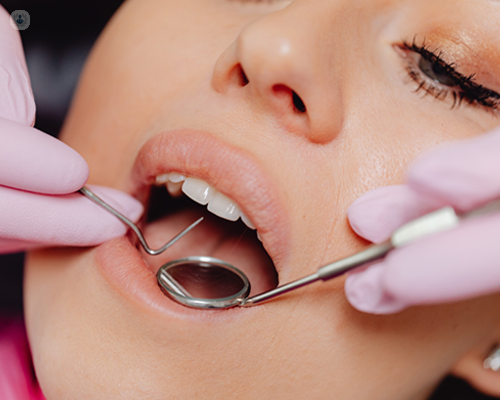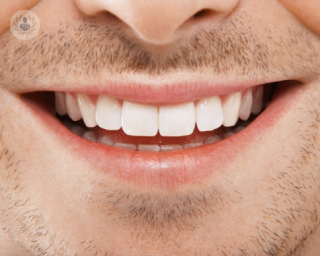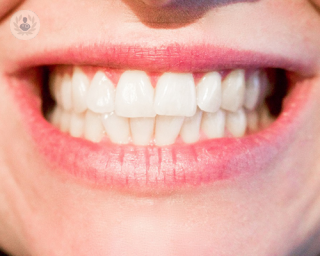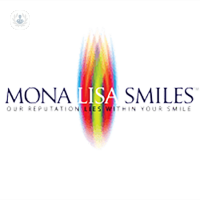Dental crown
What is a dental crown?
A dental crown is a type of prosthesis made to measure that completely covers the damaged natural tooth, with the aim of restoring function and aesthetics. Dental crowns are made of metal, ceramics or porcelain fused on metal. The procedure is performed under local anaesthesia.

Why is a dental crown placed?
A dental crown can be used with several objectives:
- Fill a space due to missing teeth;
- Holding a tooth in place and covering a tooth;
- Repairing a weak tooth and preventing it from breaking;
- Correcting misaligned teeth;
- Replacing a deformed tooth or a dental implant.
A dental crown is indicated in cases such as: large cavities where little of the natural tooth has been left behind, teeth worn down by bruxism, a chipped or broken tooth, misaligned teeth that don't match the rest, or stained or discoloured teeth.
What does the placement of a dental crown consist of?
On the first visit, the dentist applies an anaesthetic to remove the damaged restorations or cavities in the area, files the teeth, fills cavities and makes an impression of the teeth to send the results to the laboratory, where the permanent crown will be made. Finally, a temporary crown is placed while the patient waits for the fixed crown.
On the second visit, the specialist removes the temporary crown, adjusts the permanent crown (if necessary, performing an X-ray to make sure the measurements are correct) and places the permanent crown with a special cement.
Preparing for a dental crown treatment
It should be noted that a dental crown cannot be placed if there are oral health problems, since the crowns do not solve them, but mask them. So, before the placement, these problems must be addressed.
Dental crown aftercare
Once the permanent crown is placed, it is possible that, if the nerve is preserved, you feel a little sensitivity to cold or heat, but this will disappear with time. You will have to wait a few days for the crown to adapt to your mouth and it will take a little time for you to adjust to the new sensations.
It is advisable to keep a good dental hygiene routine, cleaning the crowns you would your other teeth. Also, if the crown is made of porcelain, it is recommended to avoid ice or hard sweets (such as boiled sweets) so that it does not chip.

















